Elgaria multicarinata
—
Southern Alligator Lizard
The subspecies multicarinata and webbi were significantly readjusted by Dean Leavitt in 2015. Subsequently, the English names for these subspecies were also changed.
Subspecies I've seen:
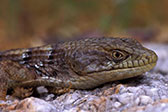
E. m. webbii
Woodland Alligator Lizard
Elgaria multicarinata webbii
—
Woodland Alligator Lizard
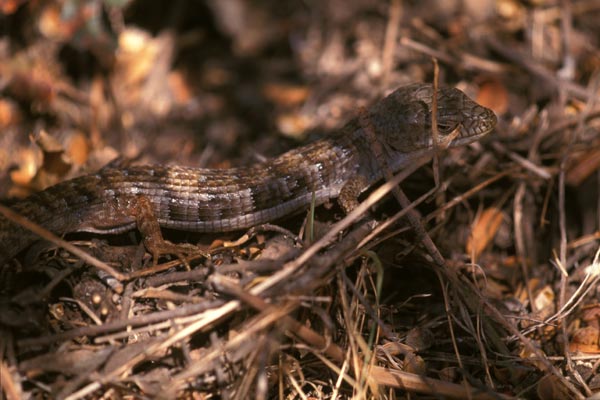
It turns out that Rattlesnake Canyon was named for its winding shape rather than any unusual density of vipers (darn it all!). The trail was pretty crowded with people and their pooches, so the herp activity was fairly low. This large alligator lizard didn't seem too bothered by the people or dogs, though.
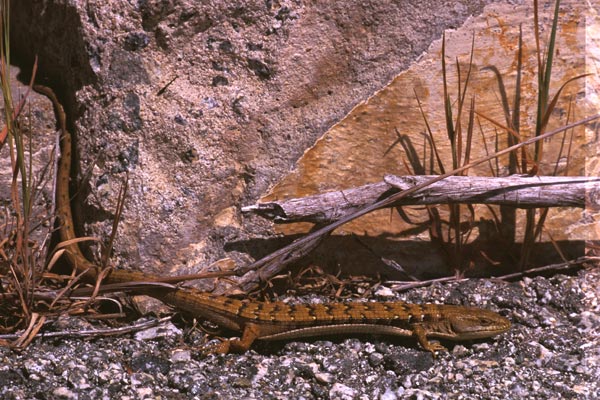
Alligator lizards display a wide range of colors. This medium-sized individual was a lovely yellow-orange, much brighter than the ones I usually see in this area. It still possesses its entire original tail, somewhat of a rarity since alligator lizards will drop their tails at the drop of a hat.
Southern alligator lizards like this one have longer tails than their Northern cousins. Their dorsal patterns are also somewhat different. The best way to tell them apart is to check whether the thin dark stripes on their bellies go between scales (Northern) or through scales (Southern), Fortunately, they are relatively easy to catch. But you do have to be careful to avoid breaking their tails.

I ran into this large fellow while searching near Clear Creek for the rarely-seen Kern Canyon Slender Salamander, but it had become too dry and there was nary a salamander to be found. You can clearly see the yellow eye in this picture, one of the ways to tell Southern Alligator Lizards from Northern Alligator Lizards.
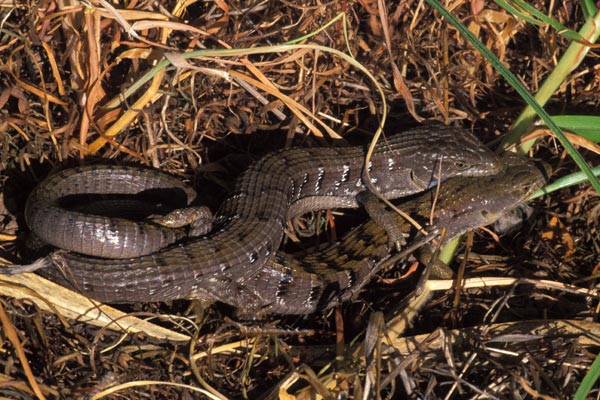
Here's a pair caught in the act. I left them alone after a quick few pictures.
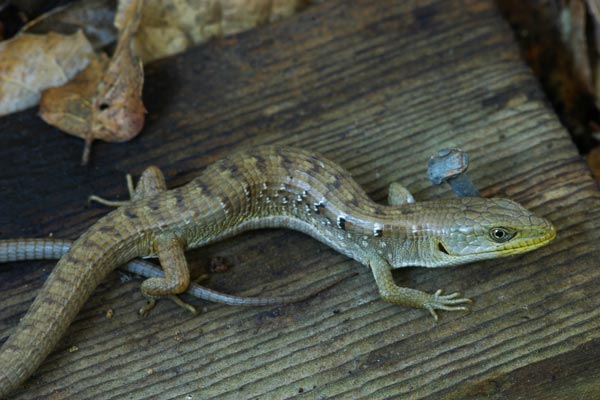
Here's a handsome near-adult with a nice full tail, enjoying one of the first reptile-worthy days of the year.
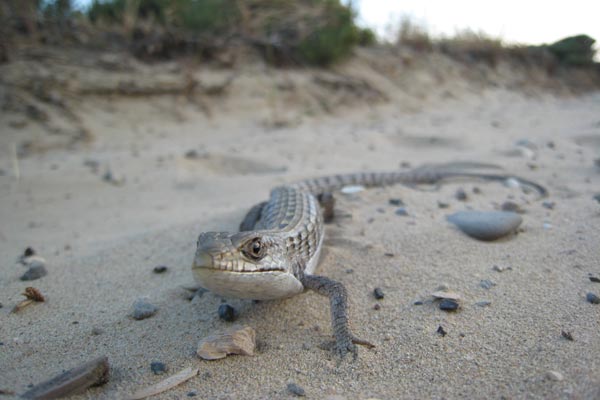
This handsome alligator lizard was basking in the late afternoon sun in the middle of a sandy trail across the dunes to the beach, where we were taking our dogs. It was a pretty cool afternoon, so the lizard let me approach very closely.
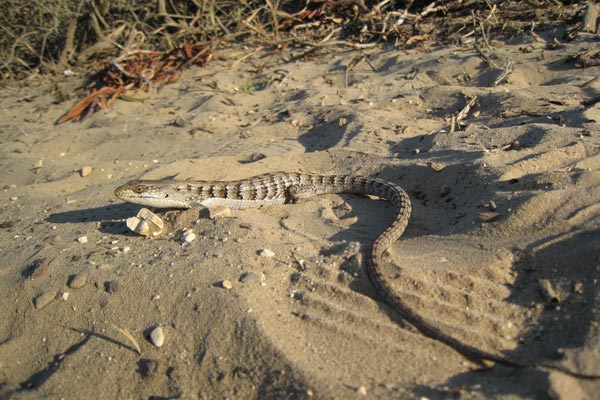
Two days later, same trail, same lizard. Apparently the dozens of people and dogs and even ranger jeeps traveling this sandy trail didn't deter it from its favorite basking spot.
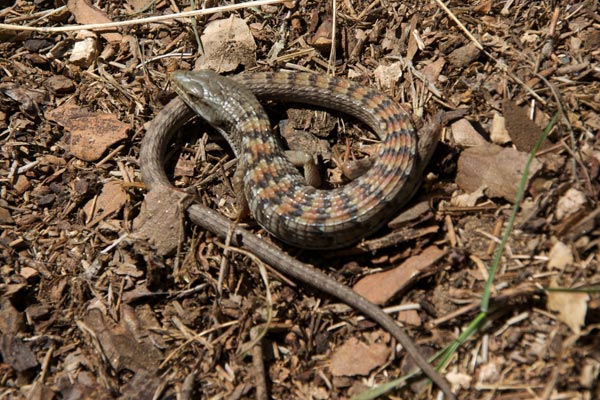
San Diego Alligator Lizards typically have distinctive multi-colored bands, as modeled by this young adult.
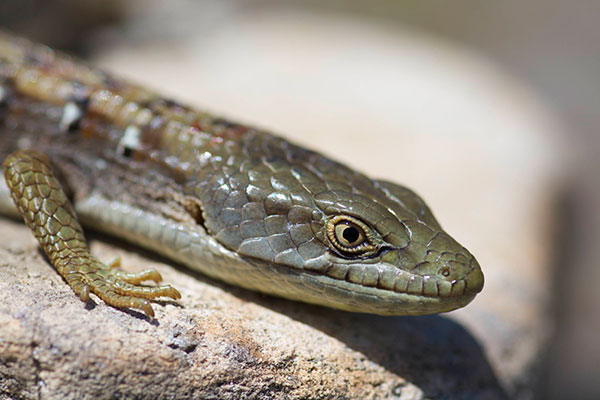
This medium-sized alligator lizard had been concealed under a board, but obliged to sit for a few close-ups.
Online references:
- Dean Leavitt's 2015 Ph.D. thesis, which redefines the subspecies of Elgaria multicarinata
Printed references:
- Basey, H. E. 1976. Discovering Sierra Reptiles and Amphibians
- Behler, J. L., King, F. W. 1979. The Audubon Society Field Guide to North American Reptiles & Amphibians
- Crother, B. I. (ed.) 2017. Scientific and Standard English Names of Amphibians and Reptiles of North America North of Mexico, with Comments Regarding Confidence in Our Understanding, Eighth Edition
- Henson, P., Usner, D. J. 1993. The Natural History of Big Sur
- Schoenherr, A. A. 1992. A Natural History of California
- Shedd, J. D. 2005. Amphibians and Reptiles of Bidwell Park
- Smith, H. M. 1995. Handbook of Lizards: Lizards of the United States and Canada
- Smith, H. M., Brodie, E. D. Jr. 1982. Reptiles of North America: A Guide to Field Identification
- Stebbins, R. C. 2003. Peterson Field Guide to Western Reptiles and Amphibians, Third Edition
- Stoops, E. D., Wright, A. 1997. Snakes and other Reptiles of the Southwest, 4th Edition